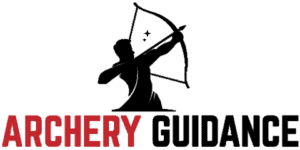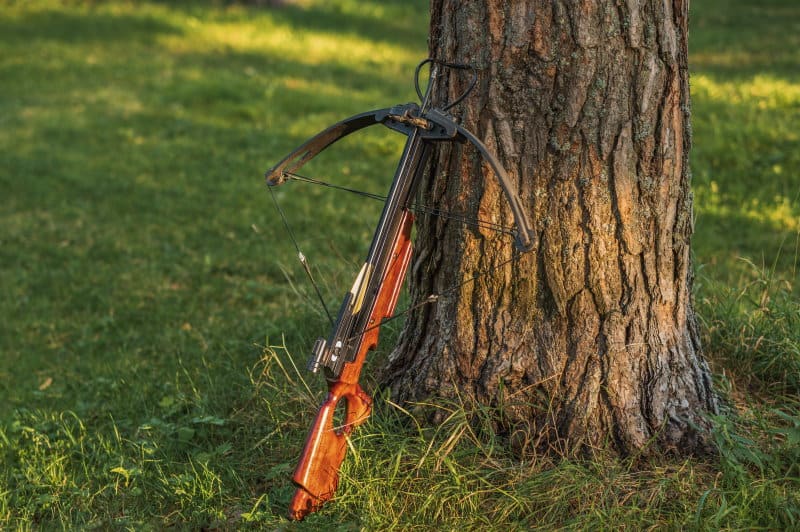Whether you’re shooting the bow and arrow to hunt animals or simply hitting the bullseye, you might face some difficulties that prevent you from achieving your target. One of them is probably related to pulling the bow, as it sometimes seems extremely hard to pull back.
Choosing the right bow and arrows is crucial for improving your shots. But even after doing that, your bow might be too difficult to pull back. So, why does this happen?
This is related to the bow’s design and the draw weight at which it’s set. Different types of bows have different draw weights, and some of them can be more challenging to pull back than others.
Your physical ability and experience while shooting arrows will also impact your ability to pull back the bow. As you become more fit and practice archery, you’ll be able to pull back the bow.
What is a bow’s draw weight?
The draw weight refers to the amount of force needed to pull a bow back to release the arrow, and it’s measured in pounds. Finding the ideal brow weight for you and for the animals you’re hunting or the target you’re aiming at is a matter of trial and error. It’s also related to personal preferences because the draw weight will also affect your accuracy if you’re hunting.
The first inches of the draw are likely to feel quite heavy, and then the cams start to roll over, and the bow doesn’t feel that heavy. This happens because, thanks to the mechanical advantage, some of the force needed will be relieved, which enables you to draw your bow a little farther to the back without exerting that much effort.
This means that although an 80-pound bow might feel quite heavy and hard to pull back after you’ve anchored it and taken your aim, you’ll be dealing with what weighs about 20 pounds or even less as you pull back. This is how you can aim your arrow and shoot it to hit the target.
The draw weight is marked on the bow’s lower limb, and it explains the amount of force you have to apply. A lighter draw weight gives you more control, while a heavier one provides more speed because you’re able to pull your bow back a little bit farther.
Which draw weight should I choose?
Choosing the right draw weight isn’t a one-size-fits-all choice because it’s related to several factors. For example, it’s pretty common to choose a lighter draw weight as a beginner archer and then work your way up towards a heavier draw weight, which also makes your arrow fly a lot faster.
A heavier draw weight means more effort, and as a beginner, you might still lack the needed physical strength to pull the bow back. However, with practice, you’ll be able to strengthen your muscles, and controlling a bow with a heavier draw weight will become easier.
Nevertheless, you shouldn’t feel pressured to increase the bow’s draw weight just because other people are doing it. If a 40-pound bow feels good to you, then it’s what you should stick to.
Are all bows equally difficult to pull back?
No. Longbows and recurve bows have heavier draw weights the farther they’re pulled back. This means that a 30-pound recurve bow might be as tricky or as heavier to pull back as a 40 or 50-pound compound bow.
The draw weight of longbows and recurve bows are determined at 28 inches of the draw length, so it’s not fixed. This means that if you have a 30-pound longbow or recurve bow and pull the arrow at 25 inches, the draw weight will be less than 30 pounds. But, if you pull it at 29 or 30 inches, the weight will be more than 30 pounds.
But a compound bow is different, and the weight is predetermined. So even after you adjust the draw length to 26 or 29 inches, the draw weight will remain the same.
Which bow type is better for a beginner?

Most archers agree that a recurve bow is probably the best option if you’re a beginner archer. Here are a few reasons why it should be your number one choice.
- A recurve bow is usually more affordable and a better investment than a longbow or a compound bow. A recurve bow typically costs less than a compound bow because it’s simpler to make and doesn’t involve a lot of parts like a compound one.
- Unlike a longbow, you don’t have to buy a new bow every time you want to increase the draw weight. Instead, all you have to do is buy new limbs, and you’ll be able to use the recurve bow at a new draw weight.
- A recurve bow can be more accurate than a longbow, especially if you’re a beginner.
- Recurve bows are incredibly versatile compared to other types. They can be used for target shooting and other types of archery setups. Hunters also agree that they’re extremely good for bowhunting, as long as you’re using the right draw weight.
- A recurve bow provides more power and speed than a longbow. It allows you to control your bow better and shoot at a longer distance, even if you lack physical strength.
- A recurve bow is easier to maintain than a compound bow. Stringing the recurve bow is an easy job that you can learn and master in a few weeks, but adjusting the pulley system on a compound bow is a job that you’d better leave to a professional.
- Recurve bows are easier to transport and store.
Wrap up
Some bows are hard to pull because of the draw weight. The draw weight refers to the force you have to apply to pull the bow back to its full length before releasing the arrow.
As an archer, you can either go with a lighter draw weight which gives you more control while you’re shooting your arrow, or choose a bow with a heavier draw weight. This will give your arrow more speed and power to help you reach your target.
Calculating the right draw weight depends on several factors like your physical strength, your abilities as an archer, and the type of archery you’re interested in. Read this article to learn how far you can shoot a recurve bow.

